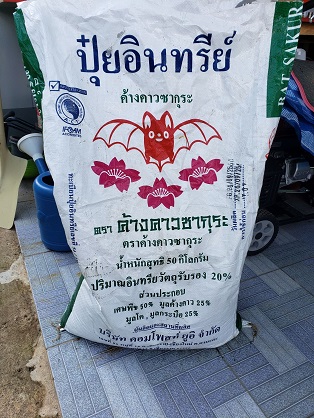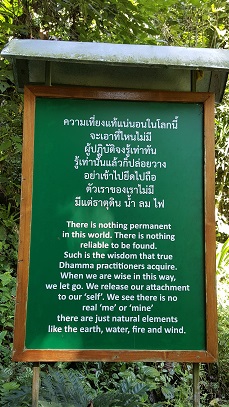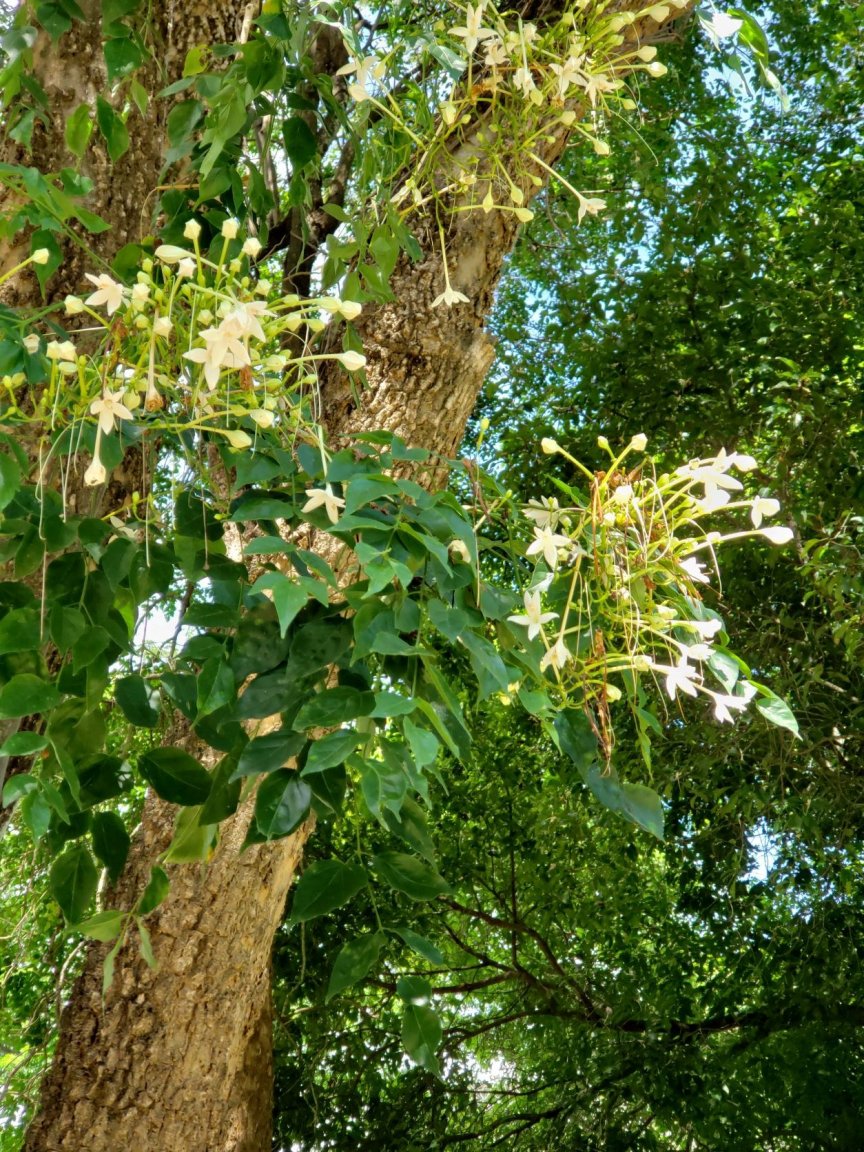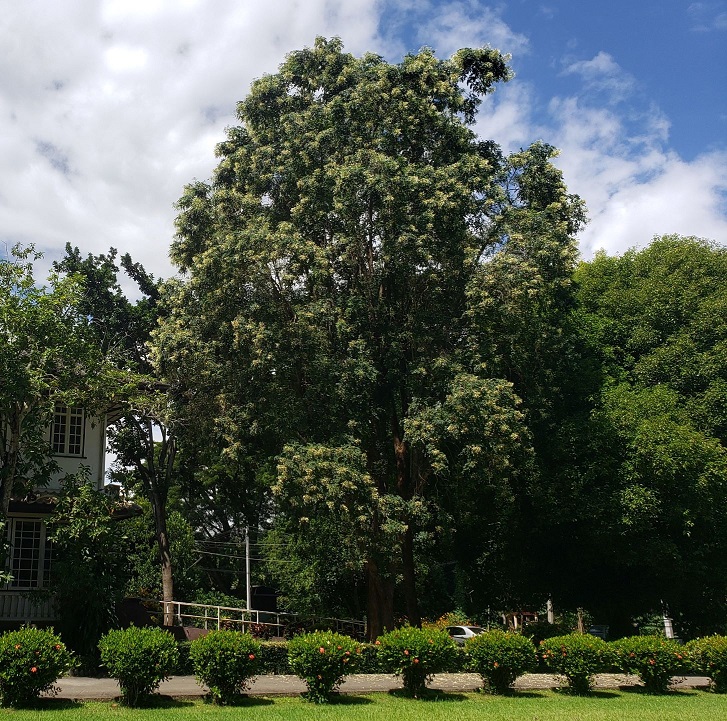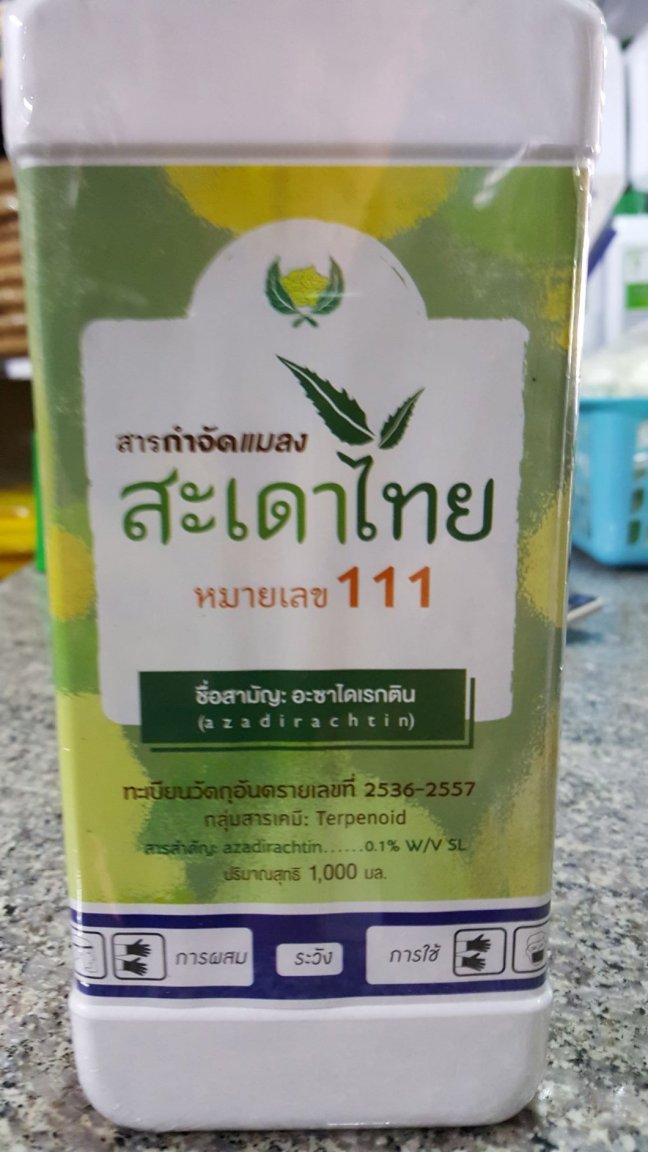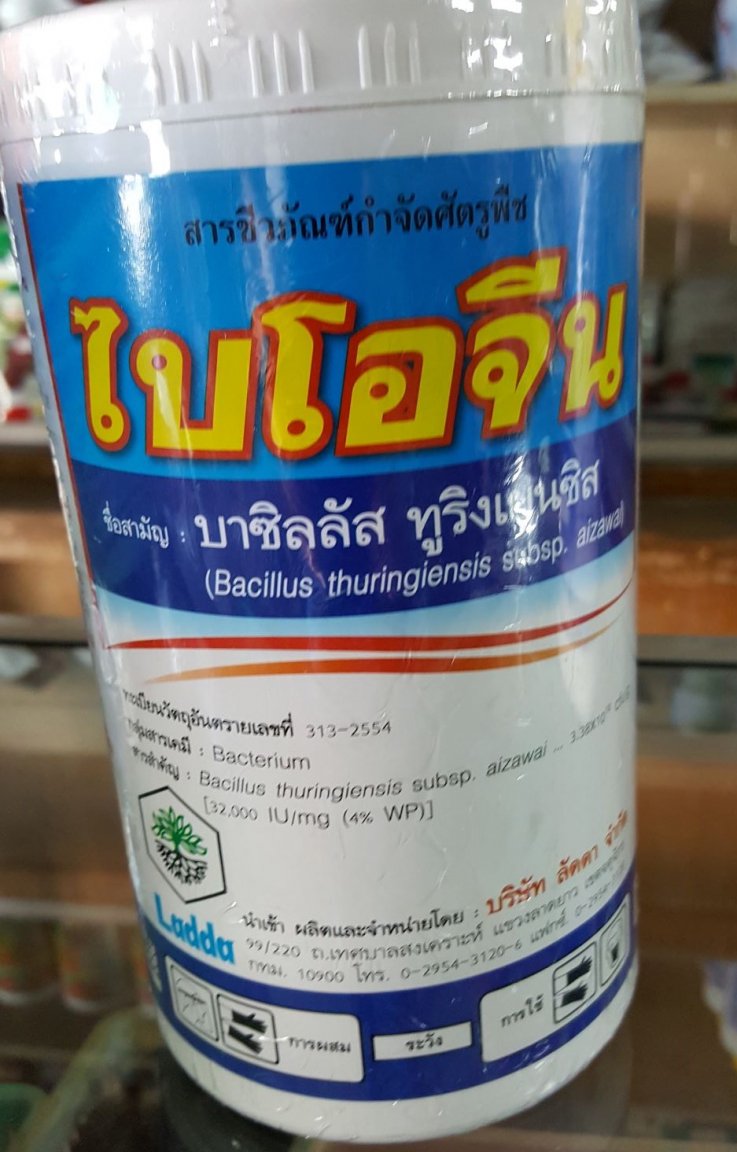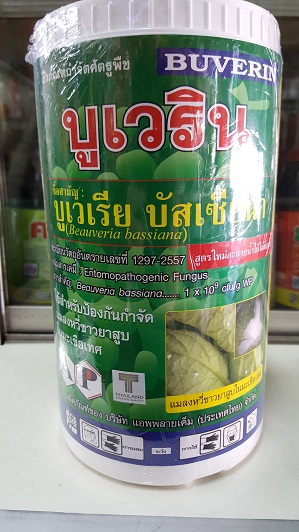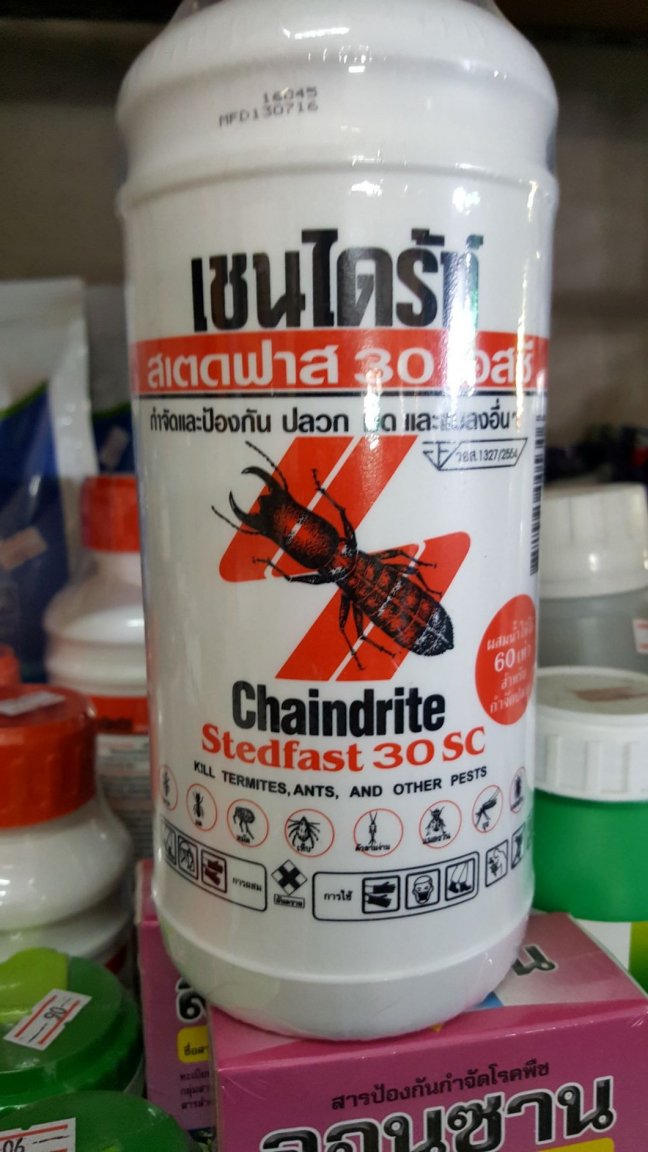
drtreelove
Advanced Member-
Posts
1,889 -
Joined
-
Last visited
Content Type
Profiles
Forums
Downloads
Everything posted by drtreelove
-
Fertilizer for fig trees
drtreelove replied to djayz's topic in Organic Farming, Smallholding and Kitchen Gardening
Ficus carica is the tree species of the mediterranean edible figs. They are difficult to grow for fruit production in Thailand due to climate limitations, and a grower that I just met has moved his production into green houses after failures outside. Some members here have posted of sucesses with edible figs, Soidog 2 was one. There are many other native tree species in the Ficus genus which produce fig fruits, but they are not suitible for human consumption. Your bats are probably feasting on the fruit from Ficus microcarpa (Chinese banyan), F. altissima (strangler fig) or another one of the 90 species of Ficus listed in Forest Trees of Northern Thailand, and there may be more in Southern Thailand. -
Fertilizer for fig trees
drtreelove replied to djayz's topic in Organic Farming, Smallholding and Kitchen Gardening
The 'bat guano' fertilizer that I pictured was purchased at an ag shop across from MaeJo University outside of Chiang Mai city. But its not the pure stuff, its mostly chicken manure I believe, with some bat guano. This week I visited the Best Garden State facility in Nakhon Pathom and saw the great additions to their organic products line. Pure bat guano is now available. although not yet posted on the BGS Facebook products page. Lazada may have other resources. Disease transmission awareness and use of PPEs should be considered with all manure products, especially bat poo that can be powdered and airborne when handling. Mask and wash. I'm sorry to say that I don't trust most fertilizer vendors and its impossible to get an honest list of ingredients because everyone is rightfully scared of copy cat product thievery or they are trying to get around regulations. I trust Organic Totto and BGS for quality and business integrity. BGS and Biosurge Thailand are now working together to make a superior calcium-enhanced vermicompost that will, in my opinion be one of the best organic fertilizer products available in Thailand. They supply some big CBD-hemp grow operations, but the vermicompost will be excellent for food production, tree and landscape soil fertility too. -
What's type of tree is this?
drtreelove replied to Bredbury Blue's topic in Farming in Thailand Forum
Yes, tree trimming is usually required in a residential setting. And after over 50 years of getting calls for neighbor disputes over tree issues, and sometimes involving lawsuits, outright hostilities and vandalism, I learned first hand that us Americans are on a mission to be master complainers, and often prove not to be good neighbors and peaceful people. But tree trimming does not always have to be radical and disfiguring to the natural form and beauty of the trees. I have spent my life, as did my father before me, offering moderate, aesthetical and tree friendly alternatives to radical topping and removals. And now there is a whole new movement of training and certification of arborists in Thailand, through the Thai Arboriculture Association (TAA, on Facebook). And there are now tree services with certified arborist tree workers who are capable of safe and professional workmanship, and aesthetic pruning. So we are no longer limited to hiring the local hack, and living with the consequences. -
What's type of tree is this?
drtreelove replied to Bredbury Blue's topic in Farming in Thailand Forum
I understand. Its true that sometimes the situation is such that you are faced with choosing the lesser of evils due to poor original planning for mature tree size. You may be stuck with either tree mutilation or clear cutting. But for others who may be planning and planting their landscapes, its a good heads-up to always consider the eventual size of the trees you are considering. Get informed and choose wisely. -
Fertilizer for fig trees
drtreelove replied to djayz's topic in Organic Farming, Smallholding and Kitchen Gardening
Look for a slow release COF (complete organic fertilizer) with NPK values under 10%. I'm all for soil testing, but for a single tree or two or three it may not be cost effective. A general purpose soil improvement approach would be my choice. If you have planted an orchard, then yes, hire BGS (Best Garden State) and pay the approx 5000 baht for a comprehensive soil analysis. Its well worth it to get it right. Since you are posting this on the Organic subforum, I will assume that you may be interested in the organic and regenerative ag approach, and not wanting to get into the endless chemical dependancy with higher and higher need for high salts fertilizer and pesticide use. Harsh chemistry suppresses benefical biology which is all-important in building resistance to pests and diseases, like mites that vector fig mosaic virus. Attached photos is what I use. The Totto bokashi is EM-inoculated and pre-digested mineral and biological amendments, so not as harsh as some other products. The Bat Guano fertilizer product is mostly composted chicken manure with some bat guano. Plus I would apply a good quality compost, like the excellent vermicompost produced by Biosurge Thailand Organic Fertilizer Worm Winner Vermicompost from Thailand (biosurgethailand.com) This product is also distributed by Best Garden State (on FB), which also carries their own COF products, like their 444 general purpose. Spread the COF over the root zone, well past the 'dripline' (foliar canopy spread), Mulch on top of that with the compost. Any tillage should be very light surface raking and not deeply disturbing to the lateral root zone. If you have a number of trees or an orchard, then seriously consider mixed species cover cropping. This is one of the best things you can do for soil and plant health. Good water management is vital through the dry season. Think once or twice a week deep watering for young trees. Avoid daily watering or drip emitters on a frequent schedule. As your soil organic matter, biology and root fungal associations improve, the trees will become more drought tolerant and you can adust the deep watering to a less frequent schedule. Untill your soil building and tree resistance to pests and diseases is fortified (a couple of years), consider preventive spraying with botanical arthropod pest repellent, like Azadirachtin concentrate from neem seed oil extract. (Thai Neem on FB and Lazada). -
Recent (well, maybe pre-Covid) cataract surgery in Thailand ?
drtreelove replied to BananaGuy's topic in Health and Medicine
I had cataract lens replacement surgery a month ago in Chiang Mai. SriPhat Hosp OPD Ophthamology Clinic, Dr Atitaya, a sharp young CMU med school grad. She also works at Bangkok Hosp in Chiang Mai. The cost was about 47,000 baht total, (monofocal IOL, multifocal is 80,000). There was no waiting time, I scheduled the surgery for one week after my initial exam. Its an easy, painless, out-patient surgery with local anesthetic only, that takes less than a half hour. Dressing is removed the next day and there is a noticable improvement in vision immediately. There is some recovery and adjustment time, a month later I have mild double vision that is supposed to clear with time. I plan to schedule the second eye with the same doctor. I really like Rutnin Eye Hospital in Bangkok and Dr Jutarat there, but the quote was much more. Rutnin: The estimated cost of the cataract surgery only as follows: 1) Monofocal lens is approximately THB 80,000-90,000* per eye 2) Toric lens (for astigmatism) is approximately THB 110,000-120,000* per eye 3) Multifocal lens is approximately THB 120,000 – 130,000* per eye The estimated cost of a preoperative examination is THB3,000-5,000*. The cost of RT-PCR for COVID-19 is THB3,000*. -
What's type of tree is this?
drtreelove replied to Bredbury Blue's topic in Farming in Thailand Forum
I'm sorry to hear that. 'Chopping them back' violates best management practices and destroys natural form and beauty. 'They grow back so quickly' because its a natural vigorous growth response to the loss of foliage and capacity for essential photosythesis of sugars to support life of the tree. Moderate crown reduction, size and safety managment can be achieved with proper pruning practices, while maintaining BMPs for tree health and structural integrity. Why Topping Hurts Trees (2018_05_25 14_55_25 UTC).pdf Why Topping Hurts Trees_thai (2018_05_25 14_55_25 UTC).pdf -
In my opinion there is some very misleading information in the replies here. Its always best to positively identify a pest, and then determine the entry route and method, fly in, crawl in. Small red biting insects may be ants. If so, it may be possible to DIY with a simple tracking of the ant trail and spot spraying with Chaindrite Crack and Crevice (cypermethrin and bifentrin, low toxicity for mammals) or with a boric acid bait (organic program compatible). Did the pest control company disclose the pest ID and what they were proposing to do for treatment? If not, get another assessment/estimate. I interviewed and scrutinized CNX Pest Control in Chiang Mai several years ago for a friend's termite control project. If its the same owner, he was an informed, trained, and certified pest control applicator who gave what seemed like a fair estimate for a fully disclosed appropriate treatment.
-
What's type of tree is this?
drtreelove replied to Bredbury Blue's topic in Farming in Thailand Forum
And do you know this intoxicating fragrant flowering tree, in full bloom for the last two months or so, all over Chiang Mai, widely planted in road median strips, like along the 1001 between Raum Chok and Mae Jo. ปีบ pip (Central) Sounds more like ton peep or beep. Millingtonia hortensis species page - THAILAND NATURE PROJECT Last week I saw the largest specimen I've seen, at the admin bldg on the McKean hospital property in Chiang Mai. -
What's type of tree is this?
drtreelove replied to Bredbury Blue's topic in Farming in Thailand Forum
Flowers don't lie - better for ID if present. -
What's type of tree is this?
drtreelove replied to Bredbury Blue's topic in Farming in Thailand Forum
ตีนเป็ด tin pet Alstonia scholaris species page - THAILAND NATURE PROJECT Alstonia scholaris - Wikipedia -
social security spousal benefits after death
drtreelove replied to rodknock's topic in Marriage and Divorce
If qualified (5 yrs etc) send the attached form to the FBU US Embassy Manila in order to get her on record. I don't know how it plays out of course, as I'm still kickin', but she would need your death certificate and all other appropriate documentation. And probably a lot of patience and determination, and maybe some help from an attorney or beaurocracy-literate friend. SSA-21 (2).pdf -
Thats guess work. May help, may be detrimental. High NPK ferts kills beneficial soil biology, which is the most important aspect of soil and plant health.
-
Correction: Calcium oxide is CaO.
-
The problem is, from my experience, that if you ask for boon khow, you may get a calcium product, but it may be calcium carbonate, calcium oxide, dolomite, or a construction plaster with a lye component. And it may be mis-labled and the extreme differences for soil building not even slightly understood. A few years ago I was searching for an ag gypsum supplier for a COF I was blending. My wife and I drove to a major company head office in Bangkok, which mines and distributes gypsum. We had called ahead to pick up a sample 50 kg sack or two. We were greeted by a whole team of sales and product development reps, including a staff PhD scientist. I questioned the package labeling as CaO2, which is Calcium oxide and not Calcium sulfate, gypsum. They swore up and down that it was actually calcium sulfate in the sack, but they had to label it as ca oxide to get around some regulatory restrictions. Go figure! When I got it home and opened it, it appeared and behaved like calcium oxide, not gypsum as the company had represented. And thats just one story of many disappointments in searching for organic grower supplies. I bought gypsum from another major supplier, and it was mostly brown, hard rock chunks of unscreened material, probably mined gypsum, but labeled differently as CaO2 plus other ingredients. I had to break the rocks and screen it to get some usable material.
-
I recommend that you not try to alter the pH with lime, but allow the soil chemistry to balance out naturally. The acidity from a single vinegar application will be rapidly leached with the rain we are having in CM. The grass dieback may just be a foliar burn, and not a major affect on soil pH, . Did you actually test the soil pH or just assume it was altered? A pH of 5.5 to 7 may not be a problem for re-establishing the grass. In fact it may come back on its own from the existing root system if you give it a little more time. Using a complete organic fertilizer will do more for creating a balanced soil chemistry than using a single concentrated component like lime.
-
Imprecise is too polite. I would add possible misinformation, mislabeling and blatant deception in product descriptions. Eric, what are you considering as too acidic and how did you determine this, pH alone, or a complete soil analysis. Because to try and alter soil chemistry and the underlying factors for imbalances, there is much more to it. Adding lime alone could create futher imabalance, if Calcium is not the primary factor. Consider why is the soil low pH and is this consistent throughout the year, or only now in rainy season where leaching of other cations and decomposition of soil organic matter may be at a peak. The four major causes for soils to become acid: Rainfall and leaching Acidic parent material Organic matter decay Harvest of high yielding crops Nitrification of ammonium The above causes of soil acidity are more easily understood when we consider that a soil is acid when there is an abundance of acidic cations (pronounced cat-eye-on), like hydrogen (H+) and aluminum (Al3+) present compared to the alkaline cations like calcium (Ca2+), magnesium (Mg2+), potassium (K+), and sodium (Na+).
-
Knowing the pest identification, If you get into it, it's fascinating, and makes you a better gardener. With an ID, you can learn about the pest life cycle and optimum timing for preventive treatments. Without this, its purely guess work, and you may end up chasinf advanced infestations that are hard to control even with the most toxic pesticides. Being uninformed often results in wasted money with poorly timed pesticide applications. And then there is unnecessary environmental contamination. If you care. You just want them dead, but are you sure that you're killing a destructive pest, unless you confirm the responsible pest, and that the damage is real, or just cosmetic. Here's a start, books from the founder of the Siam Insect Zoo in Mae Rim, Chiang Mai. Pisuth Ek Amnuay - AbeBooks There's another one on plant pests of importance in Thailand, but I can't find it now. Advanced pest infestations are difficult to control. Prevention and early intervention is better. There are many alternatives for biorational/less toxic preventive treatments. IA and others have told of their preferences. Wood vinegar wasn't mentioned. Organic alternatives: Neem seed oil extracts, attached: Azadirachtin concentrate product that is available. Bt biological control is good for caterpillars, but timing is critical because 1st and 2nd instar larvae have to ingest it by feeding on the sprayed foliage. Beauveria bassiana is a fungus that infects and suppresses insect pests. There are other botanicals with many YouTube videos on how to make your own insecticide/repellent. An organic grower of leafy greens that I know uses a backpack sprayer solution of wood vinegar and lemongrass extract. Not organic: Imidacloprid is a neonicotinoid systemic chemical insecticide that is applied as a soil drench for root uptake and translocation throughout the foliage. OK maybe for ornamentals, but I would not use it for edibles. At proper timing and application rate and with water management, it can give one year residual effectiveness with one annual application. Slow to take up, but long lasting protection. Best for sucking insect prevention, like aphids and scale. Somewhat effective for chewing insects like caterpillars. Not for snails or cutter bees. And then there are the big guns. Chaindrite Stedfast 30 SC is a potent pyrethroid (bifenthrin) and widely available. . You don't need the older generation, highly toxic insecticides like chlorinated hydrocarbons, organo phosphates, carbamates. The newer generation neonics and pyrethroids are bad enough on beneficial organisms, including soil bioligy, but less toxic than the older materials that many farmers and homeowners in Thialand still use, unnecessarily. That's why it helps to know what your target pest is, what host plants is goes to, and what the life-cycle and feeding habits are. Then you can more effectively use IPM, Integrated Pest Managment. Good growing condtions, soil and water managment can do a lot at preventing physioligical stress and nutrient deficiencies that attract pests.
-
O-A visa Health Insurance
drtreelove replied to Alphim's topic in Thai Visas, Residency, and Work Permits
Inquire with AA about "LUMA Long Stay Care" . Enrollment up to 80 yo. -
Caterpillars are seasonal, and are probably long gone by now, past pupa and adult stages and in overwintering egg stage by now. So spraying of pesticides including insecticidal soap or botanicals like Aza neem concentrate may be a waste. Snails, grasshoppers and cutter bees also munch and take chunks out of foliage. The damage shown in the photos is minimal in relation to the volume of the foliage in the entire plant, and maybe could be tolerated. The manual method of removal presented by Denim is good, but you have to be vigilant in spring and summer, because like he says, they can defoliate a plant overnight. The best prevention is to build healthy, bioactive soil and plant nutrition for resistance to pests and diseases. See why: Why insects do not (and cannot) attack healthy plants | Dr. Thomas Dykstra | Regenerative Ag - YouTube
.png.3b3332cc2256ad0edbc2fe9404feeef0.png)



